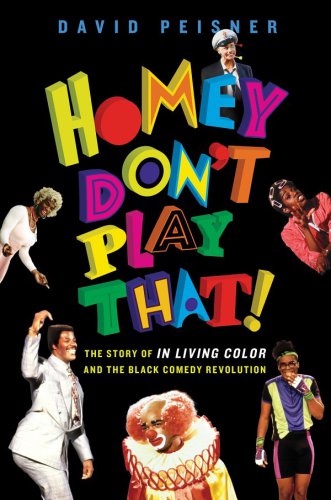
Homey Don't Play That!
The Story of In Living Color and the Black Comedy Revolution
کتاب های مرتبط
- اطلاعات
- نقد و بررسی
- دیدگاه کاربران
نقد و بررسی

January 1, 2018
American Idiot coauthor Peisner's new book is an in-depth, well-researched look into the success and aftermath of the 1990s TV show In Living Color. Created and produced by Keenen Ivory Wayans, it was a groundbreaking sketch comedy show with an African American perspective that launched many careers such as those of the Wayans family members, Jim Carrey, and Jennifer Lopez. At the time Fox was a struggling fourth-place television network and Color's success helped launch the new network. This book begins with an examination into Wayans's background and then delves into the show's various seasons in historical context. Most of the sketches, such as "Homey the Clown," "Fire Marshal Bill, "Ugly Wanda," and "Star Trek: The Wrath of Farrakhan" are discussed in depth. It's a fascinating glimpse into the intense work needed to create and keep a show running, and how the production's popularity impacted the culture at that time and still reverberates today. VERDICT Highly recommended for those who enjoy reading about the entertainment industry, how their favorite TV shows are created, In Living Color, the Wayans family, Jim Carrey, and African Americans in the entertainment industry.--Sally Bryant, Pepperdine Univ. Lib., Malibu, CA
Copyright 2018 Library Journal, LLC Used with permission.

January 1, 2018
A history of the development of the hit TV show In Living Color and the comedy dynasty of the Wayans family.Freelance culture and entertainment writer Peisner (co-author, with Steven "Steve-O" Glover: Professional Idiot, 2011) argues convincingly for In Living Color's cultural importance at the dawn of the 1990s, as it brought an underground tradition of confrontational yet reflective African-American comedy into the mainstream. Although he quotes many of the show's principals, he focuses on Keenen Ivory Wayans (and his siblings), starting with their hardscrabble 1960s New York childhood. Following a youthful fascination with Richard Pryor, Keenen determined to pursue a comedy career. He found some early success, including a Tonight Show appearance, though, as the author notes, "it's almost impossible to overstate what a wasteland Hollywood was for African-Americans in the early eighties," with the exception of Eddie Murphy. Still, Wayans was part of a formative generation of comics and directors, including Robert Townsend, Spike Lee, Arsenio Hall, and Chris Rock, all of whom crossed paths with him or were involved with ILC (or skewered by its sketches). After years of such scuffling, Wayans found opportunity via the unlikely venue of Fox, "still a new network [that] felt distinctly minor-league." While Wayans recalls "getting a blank check from Fox, 'total freedom' as he put it," Peisner notes that stories regarding the show's origins are contradictory. Still, the show won an Emmy Awards in its first season and became a phenomenon. The author ably captures these glory days and later seasons, when a mixture of grueling production norms, competition and conflicts among cast and writers, and network difficulties caused a clear decline, culminating in Keenen's departure during the fourth season (and the show's cancellation following the fifth). Since then, "the Wayans brothers have become essentially a parody factory." Peisner's telling is casual and sometimes repetitive, but he effectively pulls together the recollections of many involved with this influential enterprise.A breezy, slightly overlong account that will interest fans of African-American culture and TV comedy due to its up-close detail and numerous sources.
COPYRIGHT(2018) Kirkus Reviews, ALL RIGHTS RESERVED.

























دیدگاه کاربران